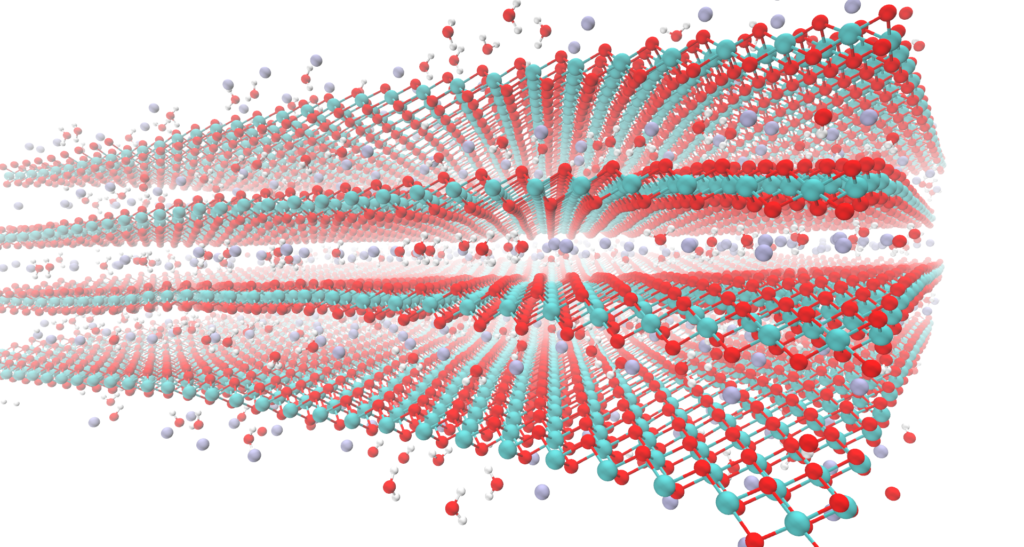Capacitive mechanism of birnessite uncovered by experiments and simulations
The adsorption and intercalation of ions from the electrolyte into the interlayers of the electrode material is a key process in electrochemical energy storage. It is described by two adsorption extremes: 1) adsorption involving mainly electrostatic interactions, leading to non-Faradaic electric double layer (EDL), and 2) specific adsorption involving chemical bonding, leading to Faradaic pseudocapacitance. Typically, these mechanisms are considered to be mutually exclusive.
While cyclic voltammetry and galvanostatic cycling experiments suggest an EDL formation in birnessite (a hydrated layered manganese oxide – δ-MnO2; AxMnO2·yH2O, where A is an alkali ion, ~0.1<x<0.7 and 0.3<y<2), measurements of changes in structure, bonding, and Mn oxidation state suggests a pseudocapacitive behavior.
To resolve this distinction between EDL and pseudocapacitance in birnessite, researchers at NC State, Penn State, ORNL, and UC Riverside have investigated the effects of interlayer confinement and hydration using a multimodal experimental and computational study in a recent Nature Materials paper.
The study revealed that the capacitive behavior of birnessite originates from the cation intercalation into a hydrated interlayer. The majority of the changes in structure and mass can be attributed to the cation (de)intercalation, as shown by XRD, EQCM, AFM dilatometry, DFT, and ReaxFF-Grand Canonical Monte Carlo (GCMC) simulations. The ReaxFF-GCMC simulations demonstrated that the most probable intercalants are H2O and K+, as opposed to H3O+ or SO42-, and the local inhomogeneity in the interlayer leads to the flexibility of the birnessite layers. However, the distance between the interlayer K+ and the surface oxygen remains large (~3Å), considering the smaller solvation shell due to confinement.
Therefore, the capacitive charge storage under confinement is not purely EDL or pseudocapacitive, but a continuum based on the interaction distance between the intercalated ion and the host material.

More info: GCMC, ReaxFF (the simulations in the paper were performed with the standalone ReaxFF in AMS2019.3)
Boyd, S., Ganeshan, K., Tsai, WY. et al. Effects of interlayer confinement and hydration on capacitive charge storage in birnessite. Nat. Mater. (2021).
Key conceptsEnergy storage ReaxFF